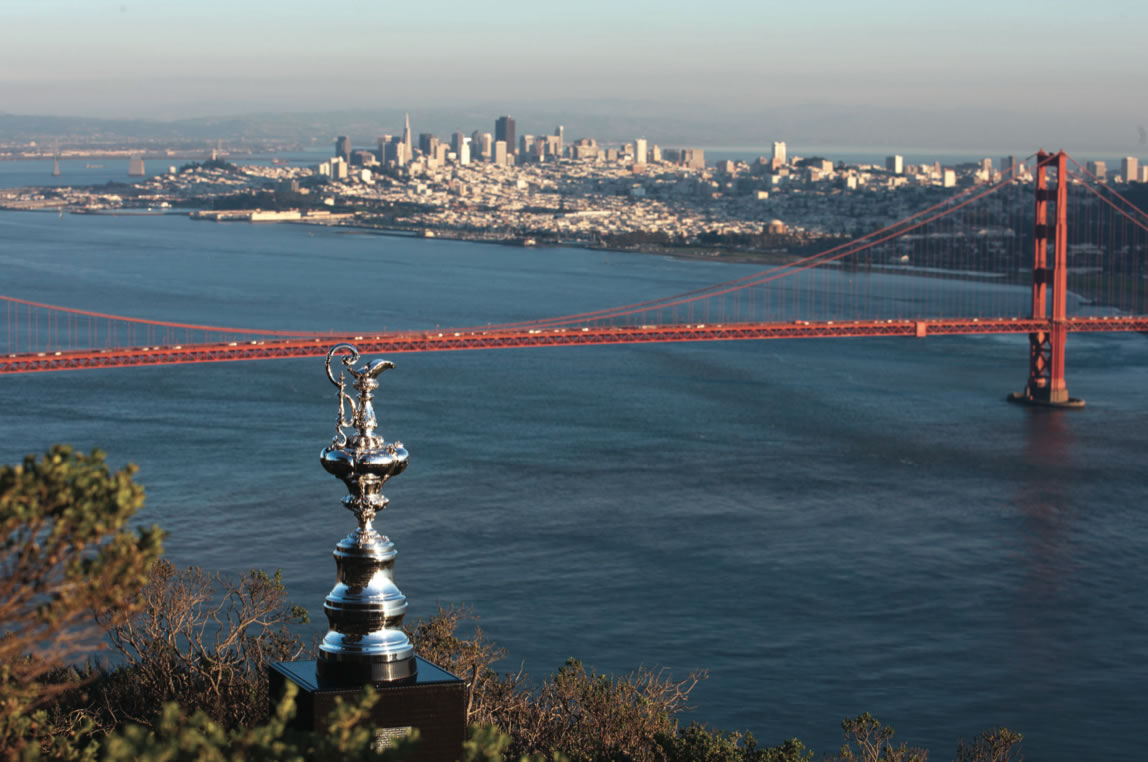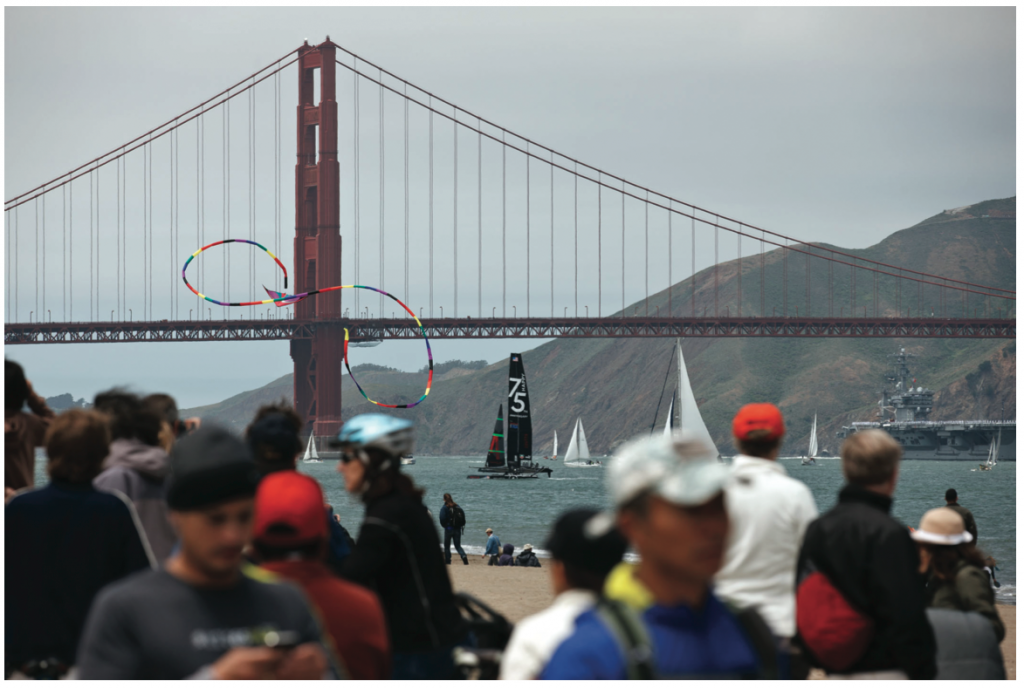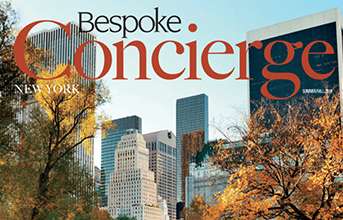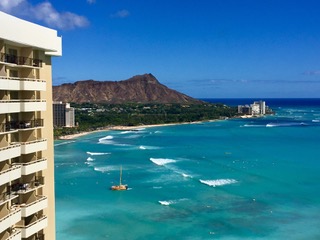Sailing into San Francisco
After an 18-year absence, the world’s greatest sailing competition—The America’s Cup—returns to the United States.
By Monica Poling
This, the 34th America’s Cup, heralds a series of firsts, including the first time the race has taken place in San Francisco, as well as a race course that for the first time ever can be seen from land.
Although fans will have to wait until September 2013 to catch the final matches, plenty of preliminary events will take place in San Francisco in the coming months.
Using the spectacular San Francisco Bay, including the iconic Golden Gate Bridge and Alcatraz as a backdrop, the America’s Cup will bring several events to San Francisco over the course of the coming year.
The first events occur this August, when challengers participate in a pre-qualifying match, during what is known as the America’s Cup World Series.
The World Series, a set of challenge regattas that commenced in 2011, will eventually determine who will compete in the second stage of the America’s Cup, the Louis Vuitton Cup.
Two World Series events are scheduled for San Francisco; one from Aug. 21 – 26 and the other from Oct. 4 – 7.
The Louis Vuitton Cup, starting on July 4, will bring together the best-of-the-best international racing teams in San Francisco. Over the course of two months, the city will have a front door view as these national teams compete in a series of races, with the winner claiming the right to challenge the current defender, Oracle Racing and the Golden Gate Yacht Club, in the America’s Cup Finals, scheduled for Sept. 7 – 22, 2013.
Race History
The America’s Cup has a storied history, dating back some 160 years, making it the oldest trophy in international sports. As a benchmark, nine America’s Cup competitions had already been held before the first Olympic Games were introduced in Athens in 1896.
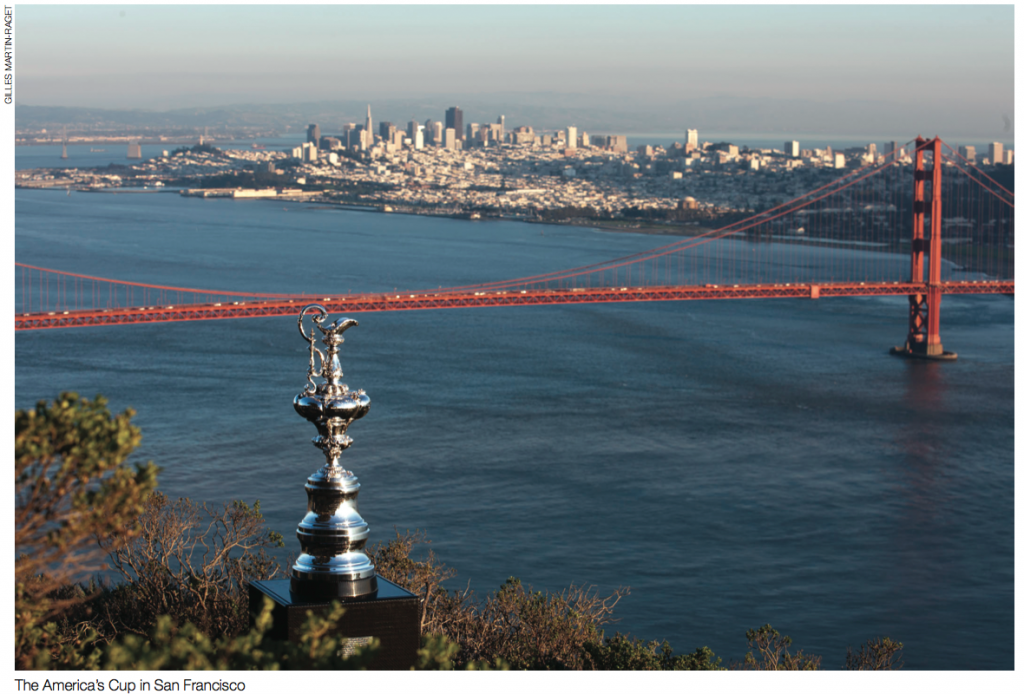 The America’s Cup took its name from the original sailing vessel, the America, which won Britain’s Royal Yacht Squadron’s 100 Pound Cup, off the Island of Wight in August 1851. The victory was particularly significant to the Americans, who had put a dent in Great Britain’s hold as the world’s pre-eminent maritime power.
The America’s Cup took its name from the original sailing vessel, the America, which won Britain’s Royal Yacht Squadron’s 100 Pound Cup, off the Island of Wight in August 1851. The victory was particularly significant to the Americans, who had put a dent in Great Britain’s hold as the world’s pre-eminent maritime power.
 New York Yacht Club Commodore John Cox Stevens and the rest the America’s ownership syndicate donated the 100-Pound Cup to the New York Yacht Club under a “deed of gift,” which decreed the trophy would become “a perpetual challenge cup for friendly competition between nations.”
New York Yacht Club Commodore John Cox Stevens and the rest the America’s ownership syndicate donated the 100-Pound Cup to the New York Yacht Club under a “deed of gift,” which decreed the trophy would become “a perpetual challenge cup for friendly competition between nations.”
In the America’s Cup 150-year history, only four nations have held the rights to the cup.
Until 1970, the America’s Cup would remain a one-on-one challenge, with the New York Yacht Club consistently defending, and winning, against a single challenger. In 1970, however, interest in the America’s Cup had grown to such an extent that a qualifying competition was introduced in order to accommodate the multiple teams interested in challenging for the cup.
This challenger series evolved into the Louis Vuitton Cup in 1983, when seven teams competed for the chance to challenge the New York Yacht Club. This also marked the first time in 132 years that the New York Yacht Club would lose its title to an international challenger, and the America’s Cup would leave the United States.
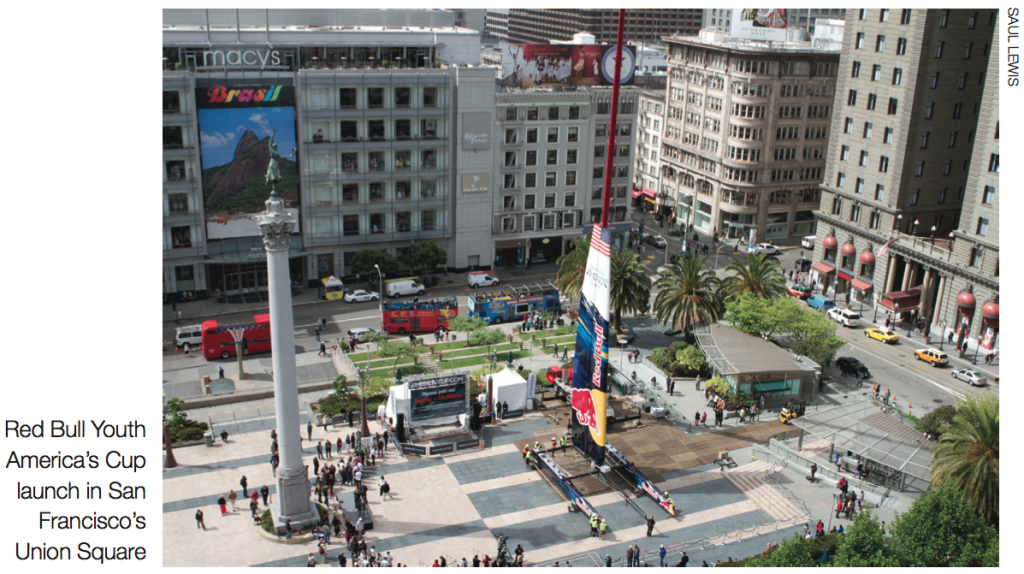 In the following years, the cup made its home in Australia, the United States (both in New York and San Diego) and New Zealand.
In the following years, the cup made its home in Australia, the United States (both in New York and San Diego) and New Zealand.
In 2003, Switzerland’s Société Nautique de Genève (SNG) earned the cup, and its move to Europe initiated a series of new changes to the race’s format.
During this time, the new organizing authority, AC Management, extended the America’s Cup into a four-year racing program, which would bring challenges to various cities throughout Europe, drumming up added interest in the race.
In February 2010, during the 33rd America’s Cup finals, the SNG were defeated by BMW Oracle Racing, led by 30-year-old James Spithill, the youngest captain to ever helm an America’s Cup yacht.
The cup’s appearance in San Francisco coincides with a significant set of changes, not the least of which is a race that can be viewed from land.
“The combination of the cats flying down San Francisco’s city front, and the close proximity of the race course, is going to make this a spectacular event,” says Brad Webb, who has competed in five America’s Cup regattas and is a member of the defending Oracle Racing team. “Anyone who hasn’t seen these racing machines up close [will now] have a front row seat to the action.”
The race makes its start near the Golden Gate Bridge and ends at Piers 27/29, providing plenty of viewing opportunities for the general public.
“The course is being designed to maximize the views from land,” says Jane Sullivan, communications director for the America’s Cup/ City of San Francisco.
Another change for the 34th America’s Cup is a series of new racing vessels, designed by Oracle Racing.
During the World Series regattas, teams are sailing a vessel known as the AC45, which features a wing that towers more than 60 feet above the deck, and which can reach top speeds of 30 to 40 knots.
For 2013’s Louis Vuitton Cup, the AC45 will make way for its big sister, a 72-foot catamaran known as the AC72 “The new multihulls are incredible to sail,” Webb says. “The AC45 is fast and physical, and we can only imagine what its big sister, the AC72, is going to be like. The boats really are tough on the body with everyone working at their max to sail them at full throttle.”
Set Sail with USA 76
Also new this year is the appearance of USA 76 at Pier 39.
Sailing fans who want to personally experience the high-speed thrill of America’s Cup racing can participate in public sailing on the USA 76, which won 21 of 33 races for the BMW Oracle Racing team in the 2003 Louis Vuitton challenger series in Auckland.
Webb, whose goal is to make America’s Cup racing more accessible to the general public, purchased USA 76 and converted it to a Coast Guard-approved passenger vessel.
The vessel sets sail four times a week from Pier 39, and participants enjoy a unique experience combating the windy swells between Pier 39 and the Golden Gate Bridge. The high-speed adventure on one of the fastest yachts on the bay serves up sea breezes, ocean spray and the creaking sound of carbon fiber straining under its load.
Guests can be as active as they like on the 2.5-hour sailings, even taking a turn skippering the helm, or they can enjoy a more passive experience, listening to the crew discuss the allure of competitive sailing.
During race days, USA 76 will offer a combination of public and semi-private sailings, providing a once-in-a-lifetime opportunity to watch the matches from an insider perspective.
Great Views of the Races
Fans who prefer a more sedate viewing arena will have no shortage of locations throughout the city to catch unique views of the challenge matches.
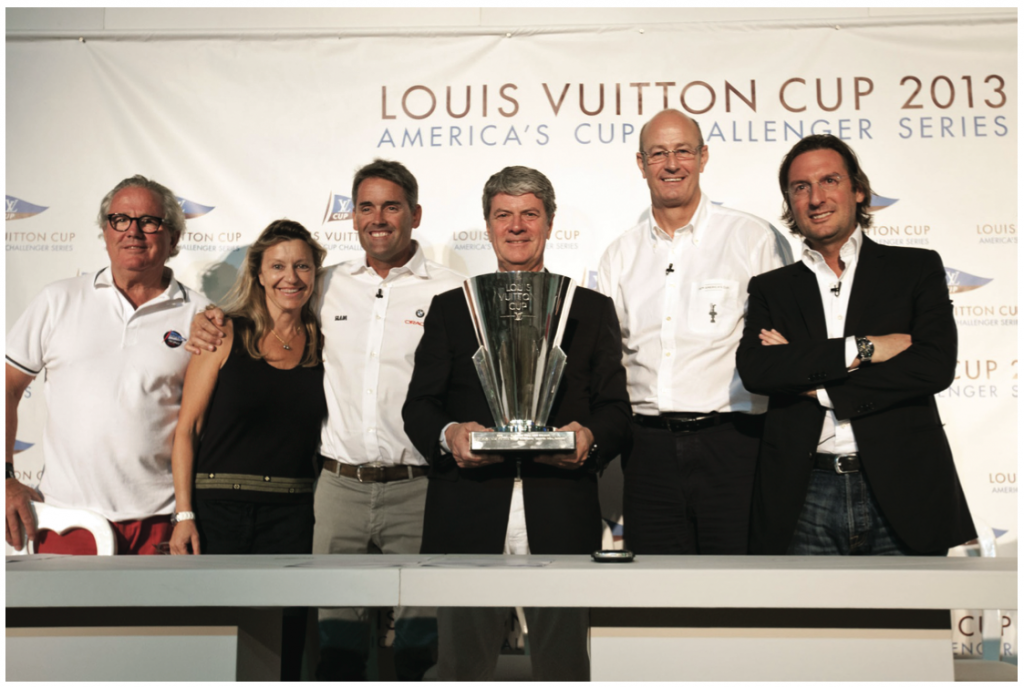 “Much of the northern waterfront will be open for viewing for free,” Sullivan says. “Depending on what [fans] are looking for, Crissy Field and Marina Green will offer great views, but people will need to bring picnic supplies if they want to eat/drink. Otherwise any of the restaurants and bars along the Pier 39 and Fisherman’s Wharf will provide great locations. And Greens at Fort Mason also has spectacular views.”
“Much of the northern waterfront will be open for viewing for free,” Sullivan says. “Depending on what [fans] are looking for, Crissy Field and Marina Green will offer great views, but people will need to bring picnic supplies if they want to eat/drink. Otherwise any of the restaurants and bars along the Pier 39 and Fisherman’s Wharf will provide great locations. And Greens at Fort Mason also has spectacular views.”
For a unique perspective on race day, fans can make the trek across—or part way over—the Golden Gate Bridge, to see the competition from a birds-eye view. Feeling the suspension bridge swing while watching race action below will definitely provide an only-in- San Francisco experience.
Alcatraz, too will serve up stunning, unique vistas, as the racing vessels pass by. The popularity of Alcatraz excursions, however, means that St. Regis guests should plan to make a reservation with the concierge as early as possible.
The Red & White Fleet, San Francisco’s popular excursion boat operator, will also be offering special viewing trips during the America’s Cup matches.
No matter how fans choose to watch the America’s Cup matches, one thing is certain: San Francisco will set the stage for one of the most memorable races in recent history.

